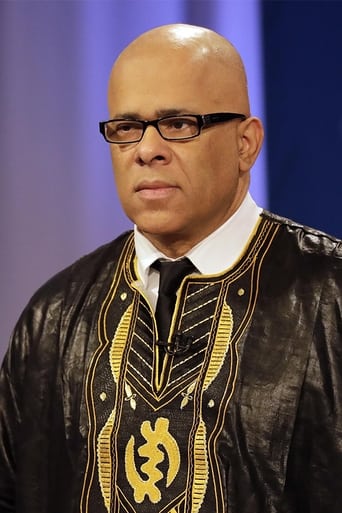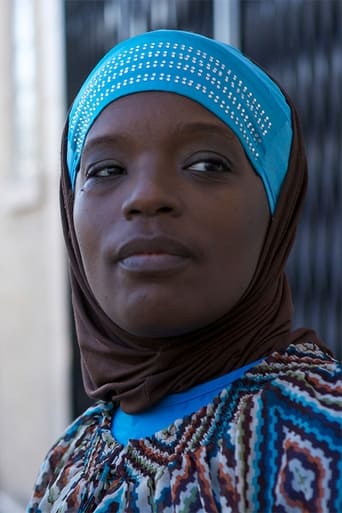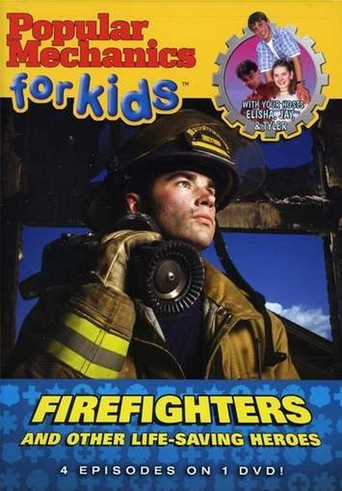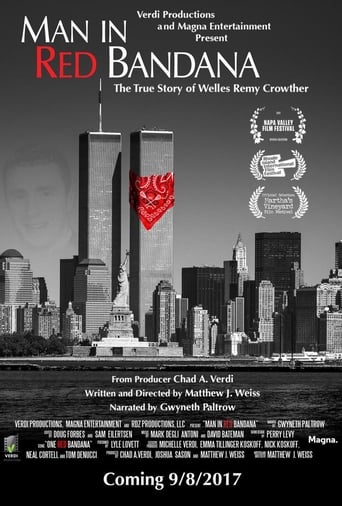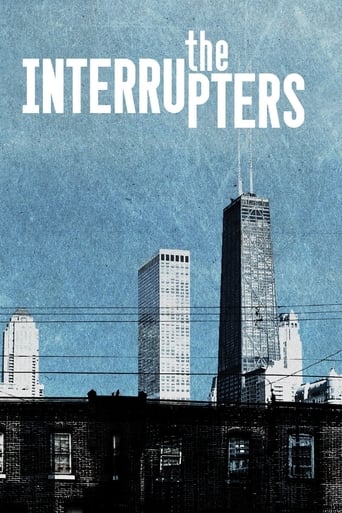

The Interrupters (2011)
The Interrupters tells the moving and surprising stories of three Violence Interrupters — former gang members who try to protect their Chicago communities from the violence they once caused.
Watch Trailer
Cast


Similar titles
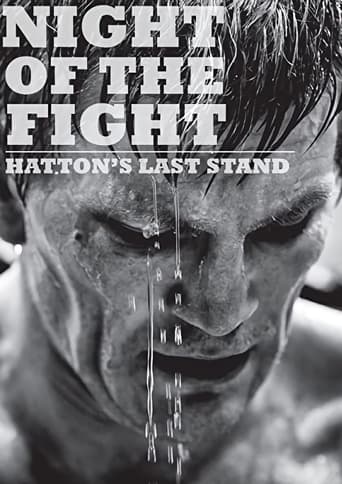
Reviews
Sorry, this movie sucks
A story that's too fascinating to pass by...
The acting in this movie is really good.
The biggest problem with this movie is it’s a little better than you think it might be, which somehow makes it worse. As in, it takes itself a bit too seriously, which makes most of the movie feel kind of dull.
Déja Spikes UPP 101The director Steve James of The Interrupters takes viewers on a journey through the brutal streets of Southside Chicago and the efforts to curb the violence plaguing these streets and their residents. In The Interrupters, three violence interrupters each dwell on their past incidents with the street violence they once employed to attempt to steer young people on the right track. The documentary's primary focus is the urban violence epidemic that was running rampant on Chicago's streets during the development of the documentary. With Chicago being heavily portrayed in the media, specifically the Englewood neighborhood which was shown in the documentary, it is apparent that violence was and continues to be an issue of popular concern. Upset citizens as well as unfamiliar outsiders often express their concerns about the violent behavior, exclaiming that "something needs to be done about the crime in Chicago." The Interrupters explores the efforts of people genuinely oriented with curtailing the violence that puts Chicago's citizens, explicitly youth, at risk. In 2011, The Interrupters' release year, Englewood had more murders than any other police district in the city (Moore 1). Englewood's crime problem is expanded because of other urban woes troubling the neighborhood. Unemployment in and around Englewood is an extraordinary 35 percent. Consequently, it is one of the poorest enclaves in Chicago (Moore 7). The documentary uses the stories of Caprysha, a teenage parolee who lives in a halfway house, "Lil' Mikey", who is recently released from prison and wanting to provide a better example for his siblings, and Flamo, a young man who is enraged by the arrest of his mother and brother and yearns for his own form of violent justice, to explore the struggles caused by crime and violence that are employed on the citizens of Chicago. The most prominent argument of the documentary seems to be that transformation from the distorted cultural norms of crime and violence is actually conceivable through the testimonies of the three violence interrupters. This argument appears to be based on theoretical speculation, only supported by the personal accounts of the three interrupters. There was no formal research done. The individual experiences and lifestyles of the three violence interrupters serves as the formalized foundation for this philosophy. The documentary portrays the notion that although one may fall victim to the misconduct and brutality that afflicts the community, it is possible to overcome infectious obstacles with guidance and support. This argument is supported by the first interrupter, Ameena Matthews, who is a former gang member the daughter of the founder of the Black P. Stones gang. After being shot, she left the gang life and transformed into a spiritual Muslim. During The Interrupters, Matthews uses her experience and street credibility, to serve as a grief counselor for the family of Derrion Albert, a teenager whose horrific beating death made national headlines. Additionally, Matthews mentors and counsels Caprysha, providing her with tough love in the hopes of getting her to obey the terms of her parole while eventually getting her life on the right track. The argument of potential transformation is further exemplified through the second interrupter, Cobe Williams. Williams, a product of gangs, homicide and narcotics, served twelve years in prison for attempted murder and drug trafficking. Williams transformed into a devout family man and devoted his life to making sure his son had a better life than he did. Williams works with two brothers who cannot keep the peace between each other. He also mentors Flamo and "schools" him with learned knowledge to protect him from the dangers of seeking street revenge. The final illustration of the "about-face" argument is through the third interrupter, Eddie Bocanegra. Bocanegra spent fourteen years in jail for killing a rival gang member. After his release, he threw himself into community work and began teaching art classes. Bocanegra works closely with "Lil Mikey" and even takes him to the barber shop he robbed to make a heartfelt apology and further demonstrate that troublemakers do have the potential to "do the right thing". With Bocanegra's efforts to change and better himself, he wished to apologize to his victim's unforgiving family. However, through Bocanegra's work, he was ready to forgive himself. The turnaround concept seems to read true in the film. Preceding the guidance and consultancy from Cobe Williams, Flamo was able to impede his desire for pugnacious revenge and was last seen in uniform at a security job. This strengthens the theory because although Flamo spent more than half of his 32 years in prison, he was able to turn his life around with the help from someone once in his shoes. The concept also reads true regarding "Lil Mikey" who, obtained a job as a gardener and put his violent past behind him. However, this theory hits a bump in the road, Caprysha ends up back at a juvenile detention center for violation of her parole. This yields that all interventions will not be successful. In order to provide a more realistic approach as well as clearer insight into the issue of urban violence, The Interrupters should have deepened their argument by researching how often at-risk youth and young adults transform their delinquent behavior and how long this change actually lasts. The interviews with gang members and families of victims as well as graphic scenes of heightened violence seemed repetitive in its solid mindset of anger and frustration. The documentary failed to display citizens who actually are not upset with the community they live in or dispute that troublemakers will ever change their ways. A part two of the documentary would be immensely helpful to see if the interrupters' efforts were successful in the long run in regards to their interventions and to evaluate if their efforts have bettered the city of Chicago and its ills as a whole. BibliographyMoore, Natalie. "Chicago's highest murder rate in Englewood." WBEZ 91.5, 5 Jan. 2012."The Interrupters." Frontline. PBS. 29 July 2011.
This film is recommended.Flowers and candles, hand-printed messages written on notebook paper tacked to makeshift shrines, all decorated with photographs of young victims. This touching memorials litter the blood-spattered streets of Chicago and are the remains of the day in The Interrupters, a powerful and disturbing documentary by the talented Steve James ( Hoop Dreams ).His film takes the moviegoer directly into the crime-ridden neighborhoods as we meet a group of peacemakers trying to restore sanity and preaching their anti-violence message to the choir. The group is called CeaseFire and it is made up of ex-gang leaders and former convicts whose motto is Stop the Violence - Save a Life.James directed and photographed his documentary and focuses on three interrupter and their "scared straight" strategies of tough love and reality checks. We met Cobe Williams, a former gang member and family man now whose father was killed during a street fight, Eddie Bocanegra, a young man easily impressed by the gang's image of fast cars, money, and girls who served 14 years for murder and now uses art as a method of expression and conflict mediation, and the primary spokesperson, Ameena Matthews, the daughter of a gang leader who was physically, emotionally, and sexually abused at an early age and has since let faith and family lead her away from that life-style and keep her grounded.We also met some of those troubled teens: Caprysha, a defeated Precious type, living in a halfway house, dreaming of a better life while constantly lying and breaking her parole; Lil Mikey, released from prison and wanting to be a better role model for his siblings; and Flamo, a young man enraged with his mother and brother's arrest and wanting his own form of justice. It is impossible not to care about their people and their lives.The film consists of interviews with gang members, families of their victims, and scenes of escalating violence. At times, The Interrupters becomes slightly repetitive in its interventions and lock-step mindset of anger and frustration. More judicious editing could have made the film even more forceful. But the passion for its compelling subject and James' craft as a filmmaker make up for those minor complaints.The documentary gives us no easy answers as drugs, unemployment, alcohol, poverty,and guns still are a major reason for the neighborhood's ills. Politicians come and go with each election, giving lip service and promises. Yet these people and their difficult lives become the on-going problem in search of a solution, and groups like CeaseFire seem to be their only course of positive action. The Interrupters allows us to see a world that we can never fathom and acknowledge the spirit of a group of strong-willed survivors, trying to make a difference and save a life or two throughout a normal day. GRADE: BNOTE: Visit my movie blog for more reviews: www.dearmoviegoer.com
This film takes a year-long look at the work of a group of volunteers trying to reduce murders and violence in inner-city areas of Chicago. They do this by intervening wherever possible, trying to mediate on the streets between those reading to kill over as little as $5 or a perceived slight, cool the anger before it spills over into bloodshed. The majority of the volunteers have a background in the gangs themselves, have served jail time but were able to get out while they still have their lives. The film follows three of the volunteers during a year where the profile of the Chicago murder rate is raised to the national level.From the director of Hoop Dreams, this film gets right down onto the streets of Chicago and, while the volunteers are dealing with people ready to kill, the camera is right there too – getting good access and surprisingly natural footage from everyone involved. For the most part it is the capturing of this world that makes the film engaging because while many people (particularly on the internet!) would like to pretend they live in tough situations and are ready to turn to violence over nothing, the majority in the western world are not and certainly for me, I appreciated an insight into the world of those who are ready to pick up a knife and stab someone because of a slight on their family. The camera captures a real natural air when situations are at their most flammable and also in the one-on-one chats, but it doesn't quite manage it when there is a group. Sometimes when break-throughs are being made with groups, it does feel a little uncomfortable and I got the sense that the camera was becoming a little bit of an intrusion.Likewise, although it isn't overdone, the film also uses sentimental music a bit too often over the top of insights or breakthroughs – and it did annoy me a little bit because none of it actually needed this music. None of these things are bad though, just a little negative in terms of impact. This is covered by how good the chosen subjects are – in particular Ameena and Cobe. To my external ears they occasionally sound uncomfortable or odd or even a bit too much like they are saying platitudes and hyperbole, but yet they work and generally their words and attitudes make an impact – even if they don't always make a lasting impact on a person's life (although the goal is always to get through the immediate threat of violence). James makes good use of them and in Ameena he finds someone likable, charming, intelligent and empathetic – she doesn't just "say" what she is doing and feeling, she lives it and it comes out in every word; wisely she is the heart of the film.Overall The Interrupters is not a perfect film because it does occasionally overdo the sentimentality and gives the subject a sense of worthiness that they may deserve but that the film doesn't benefit from. It also doesn't have much of a sharp investigatory edge, a little of which it could have done with a little bit of, but otherwise the film is engaging and moving thanks to the ground-level access and the force of the personality and bravery of the volunteers focused on.
The Interrupters is frustrating. The three 'violence interrupters' which this film follows must have an endless supply of optimism and an iron will to go out there every day and try and convince people, who mostly are not looking to be convinced, that there are better choices than resorting to violence and revenge. A normal person would give up, probably on the first day, but not the CeaseFire interrupters. Most of CeaseFire's violence interrupters are ex-cons. This is actually a plus on their job application for a position like this. They know firsthand the consequences and utter futility which comes with choosing the violent option in an argument on the street. Their goal is to intervene in an argument's 'front end' before pistols are drawn from waistbands. Chicago has drawn national attention for the number of murders which happen on its streets every year, especially involving adolescents. The Interrupters follows a year in the life not just of the CeaseFire organization, but specifically three of their most committed mediators. The most engaging and interesting person by far is Ameena Matthews. She is the daughter of Jeff Fort, one of Chicago's most notorious gangsters, who made mistakes in her youth but is now out in force and ready to get in your face to show you just how wrong a choice violence is. With no fear, Ameena will walk in the middle of a large group of young gangbangers and give them a lecture on just where they are headed. Amazingly, these lectures usually work. You do not want to disappoint Ameena Matthews; she is one of the most persuasive and enigmatic people ever to show up in a documentary.Her fellow mediators are not as engaging as she is though. Cobe Williams is usually an interesting guy to follow, especially when he is trying to calm down a man known as 'Flamo'. Flamo has a particularly bad day when he first meet him and appears to be 100% ready to charge down the block and start a shooting spree. Cobe listens, nods his head, and then offers to take Flamo out to dinner thereby putting some distance and time between him and his problems. We check in with Flamo every now and then and he provides some segments of comic relief and even some hope. The third mediator is Eddie Bocanegra. He comes in a distant third on this list of three. Most of the time, he is with the family of a deceased young man who made some poor choices and ended up in a coffin. Eddie strikes up a relationship with the boy's sister and encourages her to draw to deal with her grief. The rest of the time, Eddie leads an art class in a local elementary school to teach the kids who are just a few years away from their prime ages of vulnerability to think through their choices to their logical conclusions. Eddie is never shown actually talking down violent situations like Ameena and Cobe are. He acts as more of a peripheral mediator rather than a down in the mud violence buffer, at least that is how the editing process shows him. The filmmaker, Steve James (Hoop Dreams), checks in with various at risk youth throughout the year. Some start off in very shaky and turbulent places but steadily pull themselves up and out of the gutter. Others, however, leave you shaking your head at the end acknowledging that there will most likely be many more failures for the mediators than successes. Happy endings really do seem few and far between in the streets of Chicago, even when there are extremely persuasive interrupters who guarantee that if you pull the trigger, you will not win in the end.


